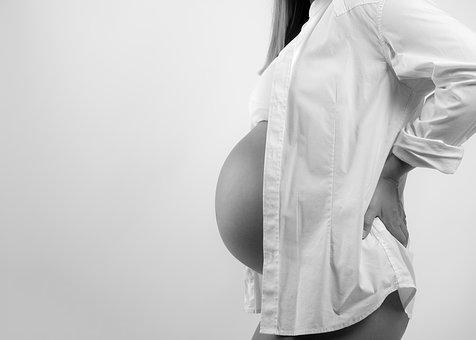One of the biggest fears of new mothers is having tears at the time of delivery or episiotomies. The only way to prevent this is with care and exercise both before and at the time of expulsion, so it is very important to know how to prepare for childbirth.

This issue creates a lot of uncertainty due to the thousands of creams and oils offered for prevention, however it has been shown that the best way is based on caution and a lot of care in every aspect of pregnancy. If you find yourself in doubt or are nervous about this, in we bring you what you should do to know how to avoid tears in childbirth.
What can lead to tears or episiotomies in childbirth
Although there are many causes that can cause a tear, they are mostly easy to prevent and avoid. It is important to know that beyond a pelvic floor tear or perineum, if precautions are not taken, they can cause major consequences ranging from incontinence to hemorrhoids and prolapse. Here are some causes for which tears may occur in childbirth:
- Avoid movement during childbirth: childbirth is a dance and everything is based on the movement you generate with your body. Keep in mind that performing pelvic exercises during contractions or at the time of expulsion will help expand the muscles of your pelvis and allow a more comfortable passage of the baby. Staying static throughout labor will only cause the baby to carry everything to break through.
- Pushing incorrectly: it usually happens a lot, especially in new mothers, since they do not know when to push or how to coordinate it with their contractions. In the same way it happens with the way in which it is pushed, since it is not the same to push to go to the bathroom than to give birth, since they are two muscles and different areas; Starting from here the doctor who is monitoring the birth, must tell you how to push and what to press.
- A lot of manipulation by the doctor: it is something that happens very often and it is the error of the doctor who attends the birth. Touching the perineum very often during childbirth increases the chances of injury or tears, so the best option is to keep your hands out so as not to hurt you or the baby.
What to Do to Avoid Birth Tears – What Doesn't Work
Due to the commercialization of products that promise to prevent tears, many doubts have been created and their effectiveness is not known for sure. Be very careful with these non-functional techniques:
- Perineal massages with oils: it is very common to hear that using oils with vitamin E or rosehip are ideal to prevent injuries during childbirth, however this is not the case. Since these oils are healing, they do not make any difference when the perineum is in perfect condition; are indicated for later if any tear or injury occurred.
- Intravaginal dilating devices: this species of “balloons” are becoming increasingly famous, which are inserted into the vagina in order to help dilation. Keep in mind that most of the birth does not occur in the vagina, but further back, at the level of the pelvis, and no matter how much you dilate the vagina, the perineum will remain unprotected from injury.
How to Prevent Tear in Childbirth – What DOES Work
These tips are ideal to prevent tears during the part or pelvic injuries:
- Perineal exercises or massages: performing exercises that focus on the pelvic floor are very helpful to relax and in turn strengthen the muscles that surround it; squats are an excellent option. Likewise, massages to the perineum are a great option to reduce the chances of tears.
- Apply warm compresses: using compresses with warm water on the back or belly, helps expand the tissues of the area and relieve pain, therefore it can prevent injuries to the perineum.
- Breathing and concentration at the time of giving birth: breathing properly represents the effectiveness of childbirth, so it is ideal to concentrate your body and mind to give the maximum in each contraction of the uterus. Remember that it is not necessary to push with your whole body, so focus on breathing properly in each contraction and in this way the pelvic floor will relax.







